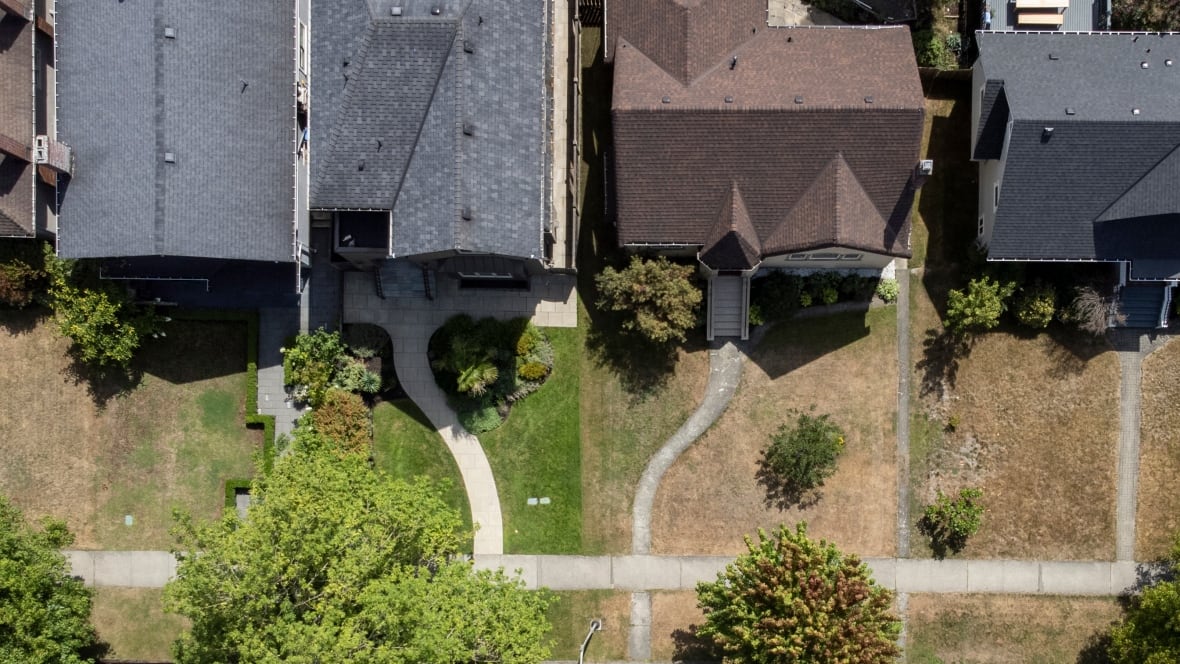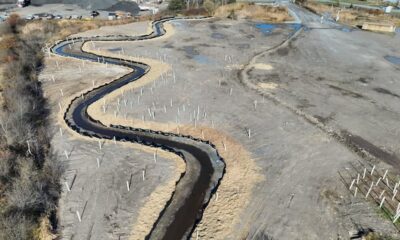Top Stories
Urgent Shift: Should You Ditch Your Lawn Amid Drought?

URGENT UPDATE: As extreme drought conditions grip much of Canada this summer, many homeowners are questioning the sustainability of traditional grass lawns. Experts argue now is the time to consider alternatives, with some advocating for a shift away from water-intensive turf grass.
The David Suzuki Foundation reports that approximately 6.2 million lawns exist across Canada, covering up to 22.7% of urban areas. With severe dry spells affecting numerous Canadian cities, these once lush expanses are turning brown and crispy, raising alarms about water waste and biodiversity loss.
Environmental experts, including Brendon Samuels from the Ecological Design Lab at Toronto Metropolitan University, emphasize that conventional lawns are not only resource-draining but also biodiversity deserts. “Lawns should be area rugs, not wall-to-wall carpet,” Samuels stated in a recent interview, highlighting their ecological insignificance amidst the ongoing biodiversity crisis.
The call for a transition to “no-lawn” landscapes is gaining momentum. Emerging trends show that over 12% of U.S. adults are transforming portions of their lawns into naturalized or wildflower gardens, with support from social media platforms like TikTok and Pinterest, where the concept is trending.
Moreover, a 2024 report from the U.S. National Wildlife Federation notes that younger generations are increasingly seeking alternatives to traditional grass, shifting cultural norms that have long favored manicured lawns as symbols of status. “We’re bringing messy back,” says Grant Minkhorst, a popular figure in the gardening community, who advocates for food production and pollinator habitats over pristine grass.
Cities are slowly adapting to these changes. In places like Toronto, initiatives are underway to support naturalized yards, including grants for pollinator gardens. However, challenges remain due to existing bylaws that often favor conventional lawn maintenance.
As summer temperatures rise, experts urge homeowners to reconsider their landscaping choices. “Naturalized yards not only enhance biodiversity but also require less water and maintenance,” Samuels explains. Native plants can withstand drought better and provide essential habitats for pollinators like the monarch butterfly.
This urgent conversation about lawns isn’t merely academic; it has real implications for water conservation and climate resilience. As communities grapple with the impacts of climate change, the question of whether to maintain traditional lawns is more pressing than ever.
With increased public awareness and a growing movement toward sustainable landscaping, the future of lawns may be something entirely different. The message is clear: it’s time to rethink what our yards can be and how they can contribute to a healthier environment.
As conditions continue to worsen, homeowners are encouraged to share their experiences and transformations. Have you switched to a naturalized yard? Send your photos and stories to [email protected].
Stay tuned for further updates as this trend develops.
-

 Politics4 weeks ago
Politics4 weeks agoSecwepemc First Nation Seeks Aboriginal Title Over Kamloops Area
-

 World5 months ago
World5 months agoScientists Unearth Ancient Antarctic Ice to Unlock Climate Secrets
-

 Entertainment5 months ago
Entertainment5 months agoTrump and McCormick to Announce $70 Billion Energy Investments
-

 Science5 months ago
Science5 months agoFour Astronauts Return to Earth After International Space Station Mission
-

 Lifestyle5 months ago
Lifestyle5 months agoTransLink Launches Food Truck Program to Boost Revenue in Vancouver
-

 Technology3 months ago
Technology3 months agoApple Notes Enhances Functionality with Markdown Support in macOS 26
-

 Lifestyle3 months ago
Lifestyle3 months agoManitoba’s Burger Champion Shines Again Amid Dining Innovations
-

 Top Stories2 months ago
Top Stories2 months agoUrgent Update: Fatal Crash on Highway 99 Claims Life of Pitt Meadows Man
-

 Politics4 months ago
Politics4 months agoUkrainian Tennis Star Elina Svitolina Faces Death Threats Online
-

 Sports5 months ago
Sports5 months agoSearch Underway for Missing Hunter Amid Hokkaido Bear Emergency
-

 Politics5 months ago
Politics5 months agoCarney Engages First Nations Leaders at Development Law Summit
-

 Technology5 months ago
Technology5 months agoFrosthaven Launches Early Access on July 31, 2025





















